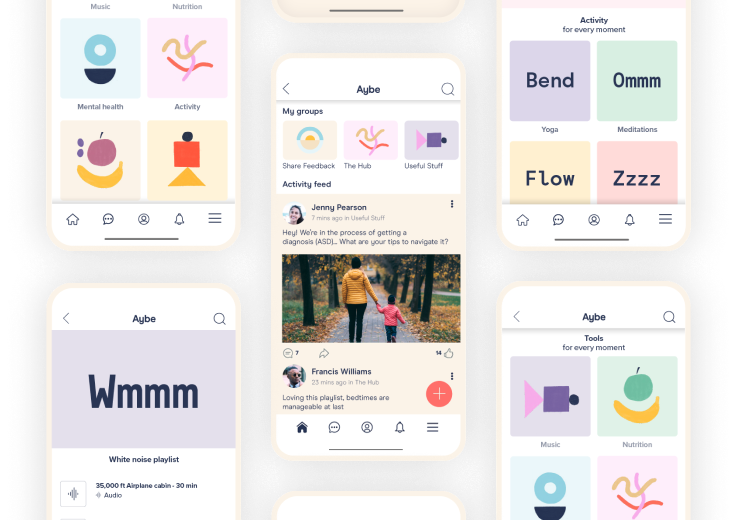NDs Flying Under the Radar: Which Groups Are We Missing?

Awareness around Neurodiversity and neurodiverse conditions has improved dramatically in recent years. But there are still many misunderstandings and missed connections. Sometimes, these gaps can lead to neurodiverse conditions being missed or misdiagnosed. Certain populations within neurodivergent conditions tend to fly under the radar more often than others.
Understanding whom this may be, why, and what can help means that people are finally able to see where there may be questions to ask or support to seek out, and give them the information they need to go talk to medical professionals and see how things go from there. With these myths getting busted, people have the chance to explore themselves, their strengths and needs. This can lead to some of the later diagnoses at 20, 45, 63, or 80 plus.
Join the Community
Download the app to access more specialist advice, community support and wellbeing tools.
Join today as a Contributor member to gain free* access!
Download now
*Free access, in return for contributing to Aybe on a weekly basis, for example by commenting, liking, responding to feedback requests. See Terms & Conditions.

Highly Intelligent and Gifted Individuals
Neurodiverse conditions like ADHD, autism, and some learning differences such as dyslexia can be missed in highly intelligent and gifted individuals. This typically happens when their skills or performance in social settings and school or work compensate for their neurodivergence symptoms.
High intelligence can allow people to put in satisfactory work and school performances that camouflage executive function difficulties ADHD causes, which can be a contributing factor to later diagnoses for teens and adults. School or work gets progressively harder or a life change happens and the dysfunction becomes more noticeable. This happens because the person’s intelligence or learned skills are no longer able to compensate for their symptoms. Dr. Thomas Brown’s book Smart but Stuck gives some real world examples of high intelligence individuals with ADHD who faced failures and setbacks in their lives, and were able to confront their struggles and get unstuck.
Some conditions tend to occur frequently in highly intelligent people, about half of autism diagnoses under age 8 have average or considerably above-average IQ. When a Neurodivergent is also gifted or highly intelligent, they are sometimes referred to as “twice exceptional” or “2e.” The risks of occurrence for neurodiverse conditions in highly intelligent individuals is high. And this can lead to many flying under the radar and missing out on a diagnosis and support. This can also add to any anxiety or depression they may have as a co-occurring condition. They may struggle and feel isolated or stressed. When these diagnoses are late or missed, individuals can have issues with integrating into the workplace. Most have a needing for autonomy and self-care, defiance, and perfectionism which can all lead to further issues.
Gender Disparities
Girls are diagnosed at a rate of 1:3 to 1:10 compared to boys for ADHD, depending on the country. They’re diagnosed at a rate of 1:4 compared to boys for Autism. Both rates are believed to be an underdiagnosis, with the occurrence rates likely being much closer. Much research and discussion has excluded much data or input from girls and women with neurodivergent conditions in the past, which exasperates this.
As girls tend towards the inattentive presentation rather than the hyperactive type most boys present with, they are less likely to be diagnosed at a young age. Since this is such an internal symptom, girls are more likely to develop coping mechanisms which mask issues but can lead to further mental health problems down the line.
The pattern of underdiagnosing girls as well as the potential for symptoms to change or intensify at different life stages has led to an increase in adult women receiving neurodiverse condition diagnoses.
Another note on diagnosis rates: Some experts believe that ADHD and autism are often underdiagnosed or misdiagnosed. A situation similar to many other neurodivergent conditions. This can be attributed to many factors, from the idea of masking to avoid any sort of negative status, poor awareness of a neurodiverse condition leading to it being diagnosed as a mental illness, or that Neurodivergents often experience multiple neurodiverse conditions without all of them being recognised. Hence, even without gaps due to gender, race, or sexual orientation, some Neurodivergents would still be under the radar. And may miss needed information and support.
Cultural Narratives and Socialisation
Much of that underdiagnosis for both genders can potentially be traced back to socialisation. Different Neurodivergent diagnoses were stereotyped into very narrow (and often somewhat incorrect) definitions. That meant that anyone who presented symptoms outside that narrow stereotype would likely get lost in the mix.
The fact that they’re less likely to exhibit the more noticeable outward symptoms may also be due to gender norm expectations for girls and women in social settings causing them to develop the ability to mask the symptoms. An example would be the image of the hyperactive boy who struggles to listen. Children with such symptoms are a typical (but mistaken) understanding of what ADHD look like every time. This ignores many possible symptoms of ADHD like inattentiveness, which girls are more likely to exhibit, and it emphasizes physical hyperactivity, which is observable less in girls.
Gender norms also may play a role in the gap in occurrence rates for boys and men with neurodiverse conditions like anxiety, depression, borderline personality disorder, and eating orders. They’re traits more often associated with women and can be missed in men. There is also often a more typical social expectation for masculine behavior. This may prevent boys or men from getting or seeking help for these conditions.
Family and broader cultural expectations can lead to a missed diagnosis, as well. If there is a focus on resilience and self-sufficiency, a guarded stance toward mental and neurological health support, or a stigma attached to particular conditions or taking medication, it can lead to Neurodivergents who stay under the radar. Economic status, possible language barriers, health literacy, educational access, and healthcare availability will also often play a role.
Feeling Seen and Understood
One important part of this mythbusting and awareness is helping Neurodivergent people who may have missed a diagnosis or been misdiagnosed and the people who care for them learn helpful information about each of the neurodiverse conditions and identify where they may be able to advocate for themselves.
It’s also so important to discover and recognise the shared realities and struggles many Neurodivergents share. Especially in the education system, healthcare, and social settings, so that they can feel that understanding and connection! Finding support and resources in the community is usually helpful and a big part of our mission here at Aybe.
Are you aware of any other social groups that tend to fly under the radar with neurodiversity? Have you seen our UK diagnostic and support map for children with ADHD and Autism? Let us know in the comment section below why you think this happens. Feel free to like, share our post, ask questions or share your experiences in our community group.
Join the Community
Download the app to access more specialist advice, community support and wellbeing tools.
Join today as a Contributor member to gain free* access!
Download now
*Free access, in return for contributing to Aybe on a weekly basis, for example by commenting, liking, responding to feedback requests. See Terms & Conditions.







